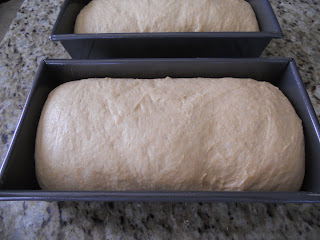I have recently been making my own laundry detergent for a couple of reasons. One, it saves
a ton of money for our family of 6. Two, when you are trying to store supplies, having a bunch of jugs of laundry soap is very space consuming. The ingredients to make your own soap take up very little room.
So I was given a recipe to make the detergent, which is the one you find all over the internet. They all basically contain the same ingredients in different ratios: A bar of grated Fels Naptha soap, Borax, Arm & Hammer Washing Soda, and the option to add some drops of essential oils for scent.
So I made this recipe a few times, and although I felt good about the savings, and it was kind-of fun to mix up the recipe in a big 5 gallon bucket, I was feeling disappointed when I used it. I love doing laundry. I love the smell of the laundry soap, the fresh smell of clean clothes, and the satisfaction of taking a dirty wrinkly item of clothing and turning it into a fresh, clean and folded garment. This homemade laundry soap was just kind of blah. The clothes seemed clean-ish, but not deep clean. I felt like my clothes were all getting dingy. And the smell was good, but it didn't smell laundry-ish nor did the clean laundry smell linger on the clothes.
So I started experimenting with adding other ingredients. I noticed that adding a scoop of oxy-clean to the washer along with my homemade detergent really helped eliminate the dingy look the clothes were picking up. I can get a container of oxy-clean at my local Dollar Tree for, well, a dollar. I decided to add a container to my recipe. It was a good idea in concept, but I have never seen so much foam in all my life. The foam billowed out of the bucket when I added water, and the detergent turned all lumpy. In my trial and error process, that was definitely an error. It also didn't solve my problem of making my laundry smell fresher.
Then I ran across this
all OXI-Active detergent for $4.69 a bottle. It already had oxy power in it, but the manufacturer had done all the science to prevent it from foaming up once it hit water. It also smells fantastic and laundry-ish, so I decided to add a bottle to my recipe. It is the perfect solution, now my laundry is coming out fresh and clean. It did drive up the cost per load a bit, but I am still saving
tons of money, and I once again feel good about my laundering results.
So, here's my recipe.
Heidi's Homemade Laundry Soap
(I can find all of the ingredients above at my local Kroger and Dollar Tree. I have added the links in case you have difficulty finding one of the ingredients)
Grate the Fels Naptha soap and dissolve in a large pot with 12 cups of water over medium high heat.
Pour into a 5 gallon bucket and add the washing soda, borax and color safe bleach. Stir until dissolved.
Add 8 cups of hot water. Stir and add the bottle of all OXI-Active. Fill bucket to about 2 inches from the top with tap water.
Let sit for 24 hours. Stir and use 1/2 cup to 1 cup per load. I have an old laundry detergent container that I just keep refilling out of my big bucket. I use 2-3 lids full per load.
This detergent is safe for high efficiency washers.








.JPG)































.JPG)



